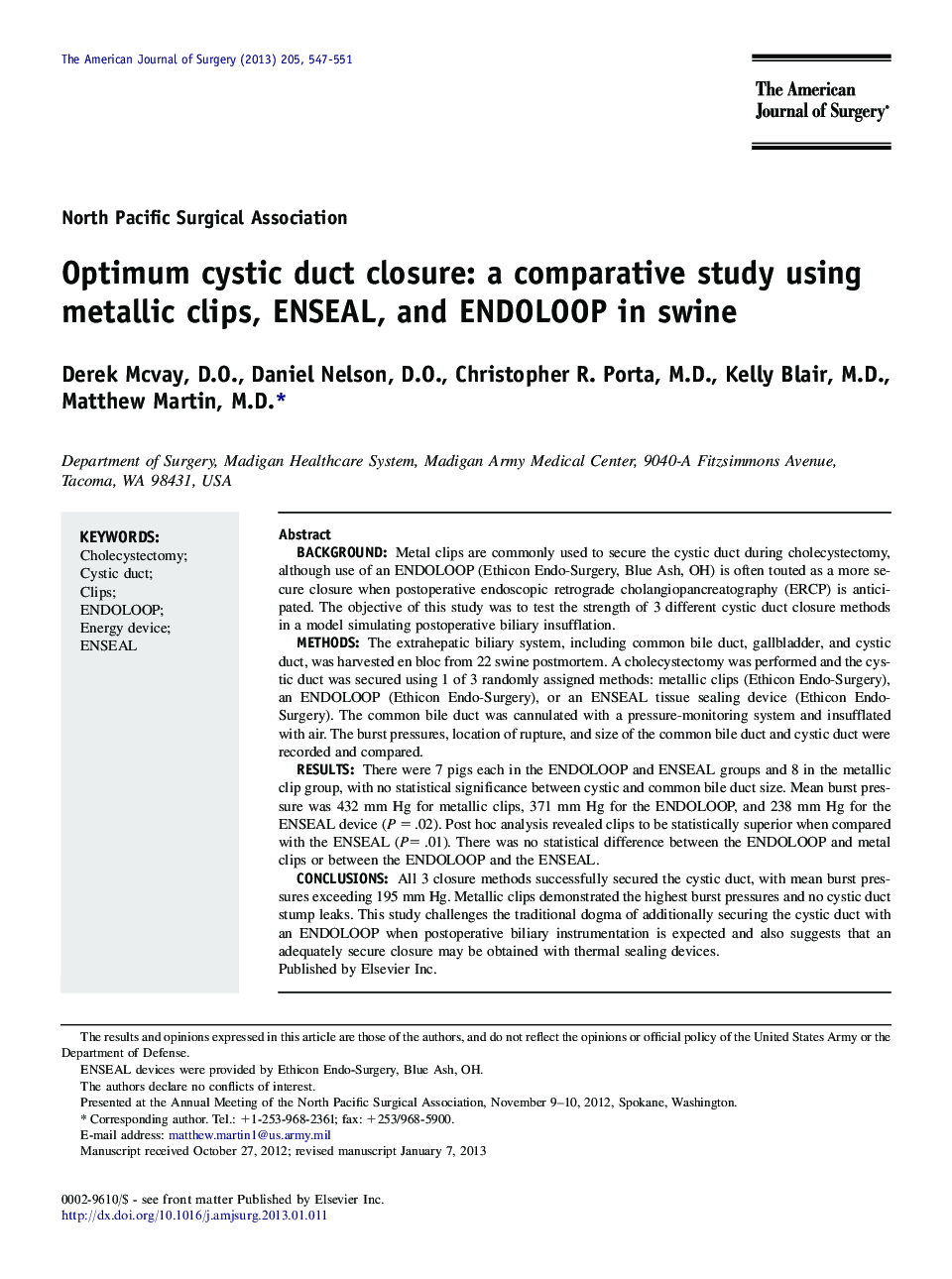| Article ID | Journal | Published Year | Pages | File Type |
|---|---|---|---|---|
| 4279266 | The American Journal of Surgery | 2013 | 5 Pages |
BackgroundMetal clips are commonly used to secure the cystic duct during cholecystectomy, although use of an ENDOLOOP (Ethicon Endo-Surgery, Blue Ash, OH) is often touted as a more secure closure when postoperative endoscopic retrograde cholangiopancreatography (ERCP) is anticipated. The objective of this study was to test the strength of 3 different cystic duct closure methods in a model simulating postoperative biliary insufflation.MethodsThe extrahepatic biliary system, including common bile duct, gallbladder, and cystic duct, was harvested en bloc from 22 swine postmortem. A cholecystectomy was performed and the cystic duct was secured using 1 of 3 randomly assigned methods: metallic clips (Ethicon Endo-Surgery), an ENDOLOOP (Ethicon Endo-Surgery), or an ENSEAL tissue sealing device (Ethicon Endo-Surgery). The common bile duct was cannulated with a pressure-monitoring system and insufflated with air. The burst pressures, location of rupture, and size of the common bile duct and cystic duct were recorded and compared.ResultsThere were 7 pigs each in the ENDOLOOP and ENSEAL groups and 8 in the metallic clip group, with no statistical significance between cystic and common bile duct size. Mean burst pressure was 432 mm Hg for metallic clips, 371 mm Hg for the ENDOLOOP, and 238 mm Hg for the ENSEAL device (P = .02). Post hoc analysis revealed clips to be statistically superior when compared with the ENSEAL (P= .01). There was no statistical difference between the ENDOLOOP and metal clips or between the ENDOLOOP and the ENSEAL.ConclusionsAll 3 closure methods successfully secured the cystic duct, with mean burst pressures exceeding 195 mm Hg. Metallic clips demonstrated the highest burst pressures and no cystic duct stump leaks. This study challenges the traditional dogma of additionally securing the cystic duct with an ENDOLOOP when postoperative biliary instrumentation is expected and also suggests that an adequately secure closure may be obtained with thermal sealing devices.
